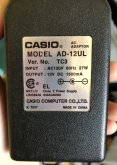ValkyrieVanLife
New Member
- Joined
- Apr 9, 2020
- Messages
- 19
Does anyone know of a good resource that shows a total beginner how to wire DC appliances into the fuse block? I am confused on what sizes of fuses to use, how to make sure the voltage matches (specifically for DC appliances that usually plug into an A/C outlet with a big block - I've put a picture of the block my casio keyboard uses, for example). I've seen a lot of videos about how to build a solar system, but they just say "wire your DC appliances to the fuse block". I can't find any resources that tell a total beginner how to do that. Any help would be greatly appreciated!! Thank you!



